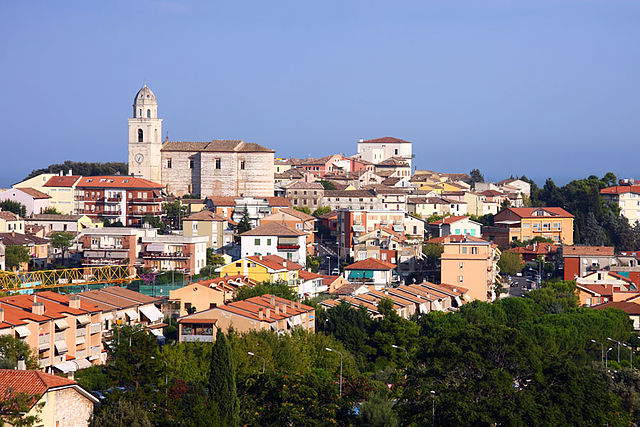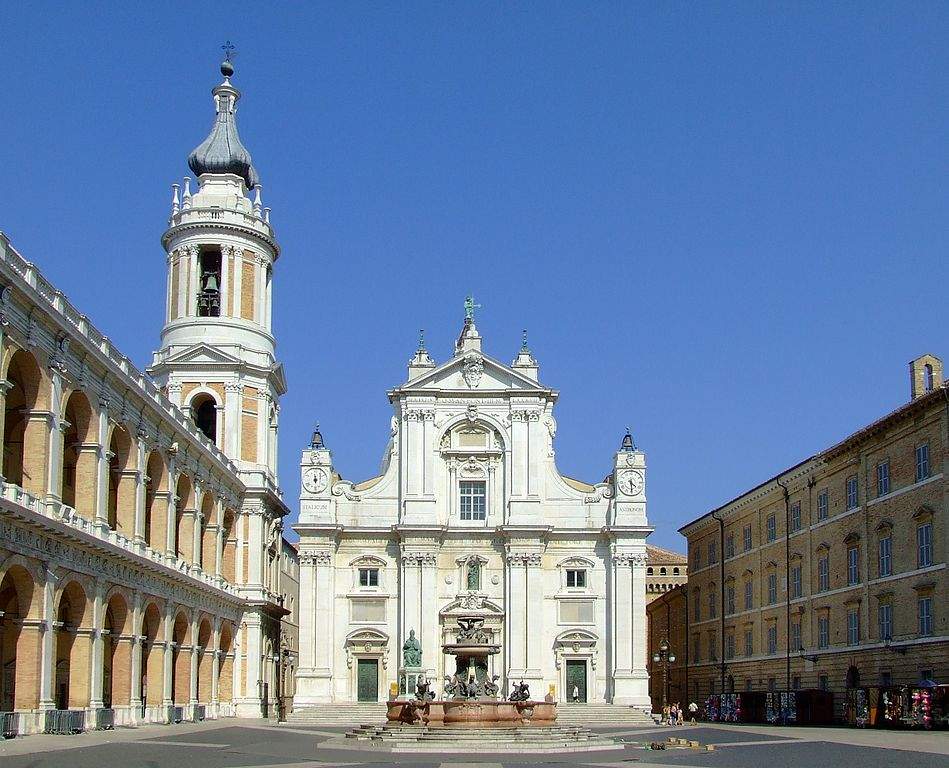The Conero is an unmissable corner of Le Marche and all ofcentral Italy where the force of the elements and the creativity of man have shaped a unique environment. Crystal-clear waters, beaches surrounded by the sinuous profiles of the promontory, and then towns, villages and villages chiseled over the centuries by the skill of artists and craftsmen. There are so many places to see during a vacation on the Conero. Ancona, first and foremost, the capital is a jewel of art and architecture that, with its churches, palaces and museums, will never cease to amaze you, but not to be outdone are also Recanati, with its rich history and constant reminders of its most illustrious citizen, Giacomo Leopardi, and the many holiday resorts such as Sirolo and Numana. Conero, however, with its regional park is also a perfect place to reconnect with nature by indulging in long walks along paths overlooking the sea and immersed in an environment rich in great biodiversity. Here are 10 must-do stops on your Conero trip.
An ancient medieval village overlooking the sea and surrounded by lush nature. It is no coincidence that there are those who call Sirolo “the pearl of the Adriatic,” it is difficult, on the other hand, to imagine a more evocative village than this one with its beautiful beaches and romantic alleys that wind between houses, churches and ancient buildings. Sirolo, however, is not only one of Conero’s most renowned resorts, but also preserves traces of an important past. The whole area of Sirolo is rich in archaeological excavations so much so that one of the largest Picene necropolis can be found here in the area known as the “Pines,” but the churches of St. Nicholas and St. Peter are also definitely worth a thorough visit. Finally, after so much culture, it is unthinkable to leave Sirolo without having taken a swim in its most famous beach: that of the Two Sisters in front of which the great white stacks soar.

Say Recanati and you can only think of Giacomo Leopardi. In this beautiful town bordered by a 13th-century city wall, references to the great poet’s work are everywhere, and recognizing them is tantamount to taking a trip back to some of the milestones of Italian literature. There are, first of all, Mount Tabor, the hill of the Infinite, and the remains of the ancient tower of St. Augustine that inspired the Lonely Sparrow, but also Palazzo Leopardi with its extraordinary library and many other places that tell of the genius of the most illustrious Recanatese ever. Recanati, however, also has much more to offer its visitors between the beaches and the splendid waterfront of Porto Recanati and the many wonders preserved outside and inside its churches, villas and museums.

This imposing and majestic villa alone deserves a thorough visit. The oldest part is medieval in origin, while the grand staircase is 16th-century and the paintings that enrich ceilings and vaults are 18th-century. Villa Colloredo Mels now houses the large civic museum, which is spread over three floors: the first has a section devoted to Giacomo Leopardi, the second a picture gallery, and the ground floor is given over to archaeology. In the Leopardi section, books, memorabilia and works of art owned by the municipality stand out, but it is probably the picture gallery that holds the most precious treasures including four of the most significant works by Lorenzo Lotto, one of the most important authors of the Italian Renaissance.

In the historic center of Recanati, what was once Giacomo Leopardi’s birthplace is still inhabited by his descendants, but it is also a museum and a place of permanent study around the poet’s life and works. A must-see is the large library where Giacomo did his studies, but also the halls of the palace and the garden that inspired so many of his works not to mention the various exhibition rooms where numerous relics, writings and documents that belonged to the poet are on display. Also worth trying is the unique experience of a virtual journey through Giacomo Leopardi’s spaces thanks to a videomapping projection covering more than 60 square meters.

A short distance from the sea in Porto Recanati is one of the most mystical places in Italy. The heart of the shrine is the Holy House, three walls that tradition says were the part in front of the cave of Nazareth where Mary was born, lived and received the Annunciation. The Holy House is housed inside the imposing basilica, built at the turn of the 15th and 16th centuries, and is the object of pilgrimage by many faithful from all corners of the world. Numerous works of art, on the other hand, are preserved inside the basilica and the Apostolic Palace, themselves two authentic masterpieces of Renaissance architecture. The latter, in particular, was designed by Donato Bramante, while the works were directed by Sansovino, then by Antonio da Sangallo the Younger and in the 16th century by Giovanni Boccalini and then finished by Luigi Vanvitelli.

The cathedral of San Leopardo dominates the city of Osimo from one of its highest points. This imposing building is dedicated to the first bishop of Osimo and stands where from the 8th century the first church was erected on the ruins of a pagan time. The cathedral of Osimo, besides being one of the most immortalized symbols of these places, also has a high spiritual significance. Inside are preserved not only the remains of St. Leopardo, one of the first Christian martyrs, but also a wooden crucifix dating back to the year one thousand that is believed to have been the protagonist of a miracle when, in 1796, Christ allegedly opened his eyes.

Known in the city as the Church of St. Francis, the basilica dedicated to St. Joseph of Cupertino blends together the austere simplicity of the original Romanesque-Gothic layout that shines through, for example, in the imposing exterior façade, with the more Baroque flavor of its interior richly decorated with frescoes from different eras. From the sacristy, moreover, one can access the upper chambers where the saint spent the last years of his life between study and prayer, while below the building is the crypt where the church’s old high altar is also located.

Housed inside Palazzo Campana, the Osimo Civic Museum puts together artifacts and works that allow us to reconstruct step by step the long and rich history of these lands. Many small and large masterpieces are preserved here, among them undoubtedly the 1464 polyptych by Antonio and Bartolomeo Vivarini, a 13th-century stone Madonna and three frescoes, attributed to Andrea da Bologna, from the monastery of San Nicolò. On the main floor of the palace, on the other hand, is the archaeological section, which houses numerous artifacts from all over the Osimo area, including a beautiful head of an old man from the 1st century before Christ.

Walking through the alleys of Offagna, it is easy to imagine running into ladies and knights after every turn. This medieval town still retains all the charm of times gone by, which are re-enacted every year in July with the famous costume festivals. Offagna’s jewel, however, is undoubtedly its 15th-century castle, which dominates the entire surrounding area from the top of a cliff. For centuries an important defensive bulwark of the town, the fortress with its splendid swallowtail battlements is still one of the best places to admire breathtaking views ranging from the hills to the sea. There is also a museum inside the fortress that displays ancient weapons and armor as well as other period clothing and hunting-related items.

The church, or rather, the little church of Portonovo is an authentic jewel of Romanesque architecture that has no equal in this corner of Italy. Built overlooking the sea, the present church consists of the remains of a Benedictine basilica dating back to the year 1000. Set between the blue waters of the Adriatic Sea and the green woods of the Conero, the little church of Portonovo is still a place of prayer and meditation, but it is also a monument that can touch the soul of visitors with its clean beauty. The exterior is made of white stone, while the interior floors are made of yellow stone and terracotta.

 |
| Conero, what to see: itinerary in 10 steps |
Warning: the translation into English of the original Italian article was created using automatic tools. We undertake to review all articles, but we do not guarantee the total absence of inaccuracies in the translation due to the program. You can find the original by clicking on the ITA button. If you find any mistake,please contact us.